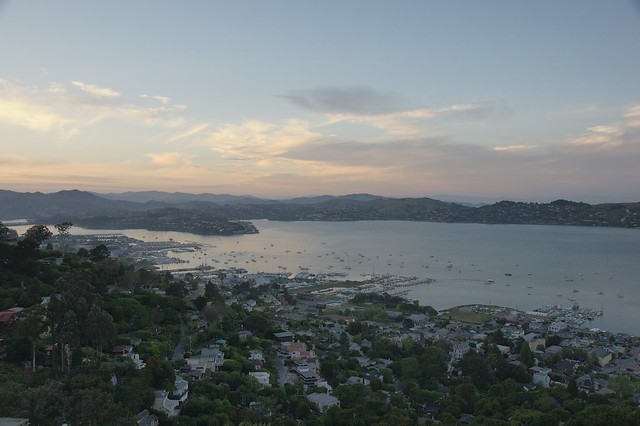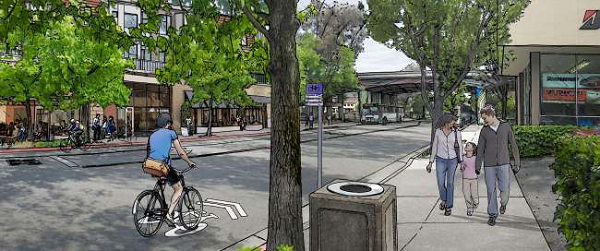 There’s an apartment building being debated in Berkeley, and it’s not a bad proposal. At 60 feet tall, it would be about as tall as other buildings facing Shattuck. 2701 Shattuck would include 70 studio apartments (PDF), ranging in size from 307 to 344 square feet. It’s close to UC Berkeley, walking distance to Telegraph and BART, and adjacent to major bus routes. It will be built on what is now a fairly ugly vacant lot, and contribute $1.4 million to the city’s affordable housing fund.
There’s an apartment building being debated in Berkeley, and it’s not a bad proposal. At 60 feet tall, it would be about as tall as other buildings facing Shattuck. 2701 Shattuck would include 70 studio apartments (PDF), ranging in size from 307 to 344 square feet. It’s close to UC Berkeley, walking distance to Telegraph and BART, and adjacent to major bus routes. It will be built on what is now a fairly ugly vacant lot, and contribute $1.4 million to the city’s affordable housing fund.
Fifteen neighbors nearby aren’t happy with it. They cite the height and the proximity to detached housing nearby, common stuff. But they also cite on the size of the units and the relative lack of activities in the neighborhood. A zoning commissioner, Sophie Hahn, concurred, comparing the units to “penitentiary housing” and said there wasn’t enough room for “intimacy.”
Though I don’t want to speculate more on the concerns of massing and proximity, the others strike me as a damaging sort of condescension.
When I choose where I want to live, I look at a number of factors: price, transit options, proximity to my friends, job, and favorite neighborhood. As a single person who spends most of his time out at work or at some other hangout, I’m not so concerned about my home’s size. I need a bed, a desk, and a place to make and store food. A studio apartment in the right location will do me fine.
I am representative of one particular niche of potential renters. Other renters will be more concerned about proximity to transit, others about price, and others will want the space to entertain. As we grow our cities, developers should have the flexibility to build units and buildings that cater to the various niches of the rental market. Not everyone wants to live on a Mill Valley hillside, and not everyone wants to live in a high-rise off the Embarcadero.
We have our reasons for choosing the places we do, but it’s the height of arrogance to assume that our preferences apply universally. So when citizens say that studio apartments are “a new style of tenement housing,” I get upset. And when a policymaker (Sophie Hahn) says of studio apartments, “It’s a bleak, lonely, unhealthy life that I would have a lot of trouble endorsing,” that offends me, because she thinks that about my life.
The purpose of any market is to allow people to make their own decisions about what they want. I think beef tongue is disgusting. I have no idea why anyone would want to eat it. I mean, there must be something wrong with someone who wants to chew on something that has the texture of their own tongue. I also hate cilantro; it tastes like someone made nausea into a flavor and called it an herb. But advocate to ban these foods? Limit them to certain designated Mexican restaurants, perhaps, Vietnamese restaurants be damned? Of course not; it's preposterous to even consider. I can make my own opinions without asking others to agree with me. That’s freedom.
So it’s not the place of any zoning commission to pass judgment on the lifestyles of the people who live in certain kinds of housing. Their purpose is to determine whether a project meets the zoning code, whether its visual and traffic impacts will unduly harm surrounding neighbors, and whether it will be a safe and sanitary place to live. Nor is it their purpose to determine whether a project is financially viable or not. It’s the developer’s job to determine that. And, in a free society, it’s nobody’s job but mine to determine whether my lifestyle is a bleak and lonely one or not.
Once government steps into personal preference, it becomes a nanny, tut-tutting our choices of home and neighborhood. Sophie Hahn, and the neighbors whom she agrees with, should stick to a critique of the building itself, not the people, like me, who they think are too depressed to live anywhere else.
Cross-posted with Vibrant Bay Area.

![Baltimore [Population: 288,530,000]](http://farm1.staticflickr.com/36/125498077_6a0785e1d8_z.jpg?zz=1)







 SMART was making news this week, what with TAM
SMART was making news this week, what with TAM